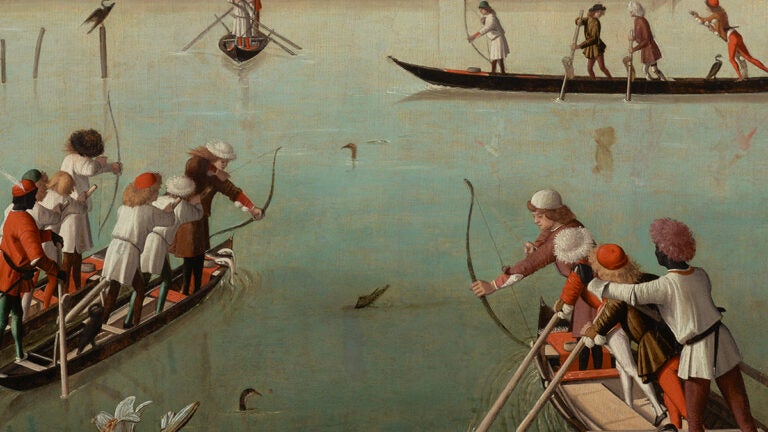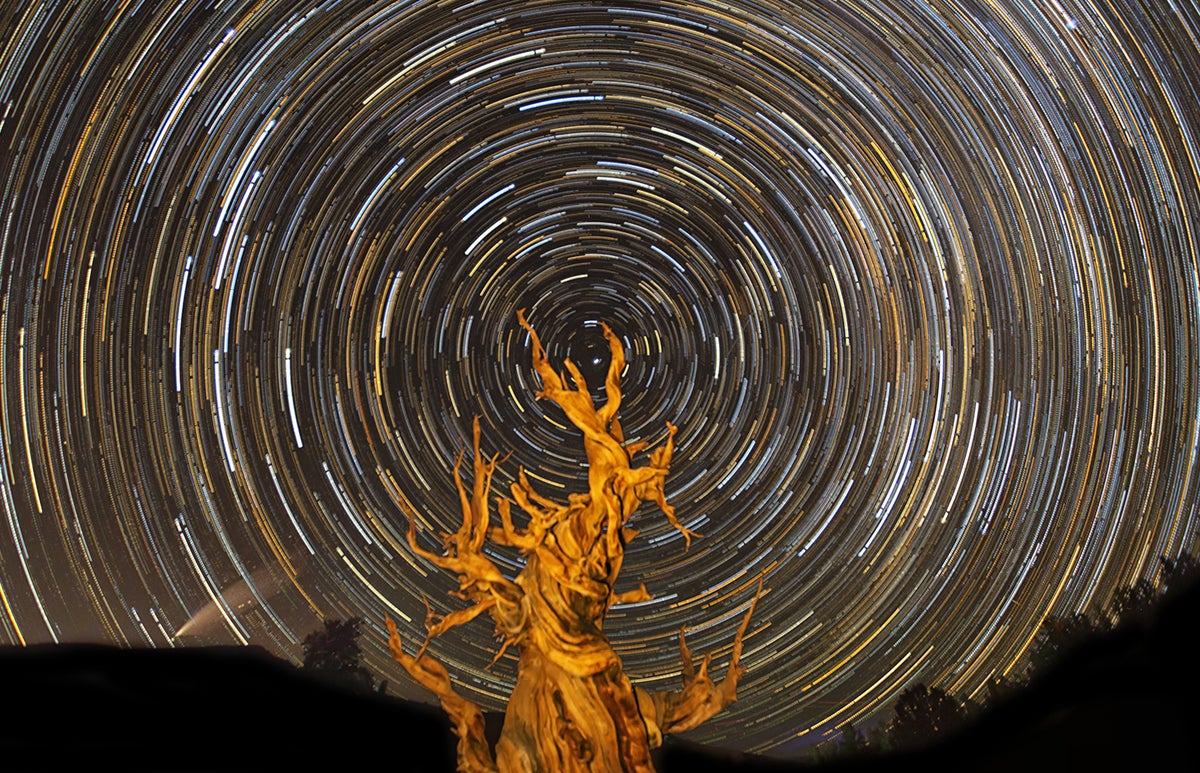
From the Italian Renaissance to the stars: an exciting approach to fulfilling GEs
The Italian Renaissance has long been considered the bastion of powerful “Renaissance men,” such as Michelangelo and Leonardo da Vinci, whose achievements have traditionally defined the period. A new general education (GE) course will challenge this premise by exploring gender, religion, sexuality and race through both art and literature.
The course is one of two new integrated GE online courses being offered this fall by USC Dornsife College of Letters, Arts and Sciences as part of a pilot program that brings faculty experts together from different fields to give students an in-depth exploration of topics from more than one disciplinary perspective. These pioneering courses aim to teach students innovative ways of thinking.
Several years of planning have gone into the design of the courses, which are part of a larger effort by USC Dornsife to provide exciting educational opportunities for all students.
The courses will not be taught every year, so if students are interested, they are advised to enroll now.
The Italian Renaissance: a new perspective
Margaret Rosenthal, professor of Italian, comparative literature and English, and Lisa Pon, professor of art history, offer the literary and visual immersion into Renaissance Italy. Their eight-unit paired course unfolds in twice weekly three-hour classes; each professor will teach 80 minutes back to back with a break in between each class.
Pon will teach the art history/visual culture part of this integrative GE, “Art, Power and Identity in Renaissance Italy” (AHIS 304m), while Rosenthal will teach “Gender and Sexuality in Renaissance Italy” (ITAL 350g).
Rosenthal and Pon describe the integrative GE as “two courses in synergy that will offer a fuller and richer picture of the period.”
“Professor Rosenthal is going to look at poetry and texts, and I’m going to look at pictures and think about spaces,” Pon says.
“Everything taught in Professor Rosenthal’s class is going to be built upon and expanded by my class and vice versa,” Pon says.
By taking this pair of courses, students will learn to harness a number of different skills — from discovering how to look at different types of evidence, exploring texts, looking at hand-held objects, thinking about what it means to read a picture — all of which will help to set them up academically for the rest of their degree.
Challenging traditional perspectives
Rosenthal notes that women played a strong role in Renaissance literature, through their participation in literary salons and as patrons of literature and the arts, while both sexes during this period challenged restrictive and traditional notions about gender, religion, race and sexuality.
Students will study Michelangelo’s love poems to a young male aristocrat as well as his intense, spiritual sonnets to an aristocratic woman poet from Rome, in which he shares with her all of his spiritual doubts and worries about salvation as a result of his desires for same-sex love.
“We’ll also look at a courtesan poet who is selling her body for financial gain but also having a lot of difficulty with her male patrons,” Rosenthal says. “She wants to assert herself, and we see moments when they want to either honor her or take her down as a scapegoat for the plague of Venice because she’s becoming too powerful in Venetian society.”
Course work will range from creative writing projects, in which students are invited to emulate a celebrated writer of the period, to mapping the journey of four teenage boys who traveled from Japan to Rome to see the Pope in 1580.
Incorporating new voices
Pon says she finds it exciting to expand thinking about the Renaissance beyond its traditionally acclaimed figures — mostly white, male and privileged — to incorporate other voices and experiences.
“When we discuss popes and military heroes, we also read love poems, letters and essays by courtesans, widows and nuns,” she and Rosenthal wrote in their course description. “When we consider the lives of Catholics, we will also study the varied experiences of pagans, Jews, Muslims, and ‘Moors.’”
So why is it useful to study the Italian Renaissance?
“One reason is because it was a period in which a certain society was coming to terms with the fact that they were far more multicultural than they maybe wanted to admit,” Pon says. “To try to capture that, and improve our understanding of it, is a way for us to better comprehend and deal with our own time.”
To that end, Rosenthal plans to start the course with Boccaccio’s Decameron, a collection of stories written about individuals escaping an epidemic of bubonic plague, which she plans to connect with the current pandemic.
Pon thinks the fact that the course reflects issues we are currently dealing with, such as gender equality, Black Lives Matter and the pandemic, makes the course particularly approachable.
“It’s a way for students to understand and have tools for the world they’re living in now,” she says.
Representing physics and astronomy through the arts
Vahe Peroomian, associate professor (teaching) of physics and astronomy, will teach “The Physical World and the Universe” (110Lxg) and Dana Milstein, assistant professor (teaching) of writing, will teach “Representations of Physics and Astronomy in the Arts” (111xg), as an integrative course which marries basic, conceptual physics and astronomy with a visualization of the sciences and the arts.
Peroomian and Milstein say it’s very rare, and possibly even unique, to find an integrative course of the type that USC Dornsife is offering that is co-taught as one course and that offers equal weight and relevancy in both physics and humanities or social sciences.

Star trails and Comet NEOWISE photographed at the Ancient Bristlecone Pine Forest, White Mountains, California. (Photo: Vahe Peroomian.)
Peroomian points out that the course is much greater than the sum of its parts.
“You can take the physics 100 course or the astro 100 course separately, you can take any visualization course or any humanities GE course, but each will give you their own silo, without really broadening and applying that knowledge,” he says.
“Because we’re going to be teaching this course together in the classroom at the same time and bouncing ideas off each other, we’re going to be talking about ideas that we couldn’t even cover had a student taken these two courses separately with separate professors.”
Students will read articles and writings that they never would be exposed to in a pure science GE class and seeing concepts that they wouldn’t see in a humanities or an arts GE course, Peroomian explains.
The integrative course, Milstein says, emerged from the idea of human imagination.
While we don’t always have the technology or the knowledge to understand our universe and astrophysics, what we do have is imagination, she notes. Scientists use that to help develop very complex, sophisticated ways of creating theories about the way the universe works that they can’t even confirm.
“For me, that mirrors how musicians, artists, photographers and movie makers also use their imagination to think about space,” Milstein says. “So, our course is really about the human mind and the human experience and trying to see what the commonalities are and how we have these overlaps, these synchronicities.”
Acquire new skills
Milstein says the course doesn’t focus uniquely on gaining expertise on the subject matter: It’s also a model for how they want students to approach learning from their freshman year onwards.
“This is really a course that teaches students how to inquire, how to discover, how to experience, and how to fail forward,” she says.
Students on the course will learn a wealth of skills, including how to compose music, how to take photographs, how to do presentations, and how to not only conduct experiments, but also design them.
“If students are looking for a class where they’re active agents in designing their learning, taking ownership of it and then transferring it out to real world practice, that’s what they will get from this course that they’re not going to get anywhere else,” she says.
One of the topics students will explore is the night sky, looking at scientific principles and exploring how humanists and social scientists have approached the same topic.
Peroomian will teach students how to create a star trails picture to visualize the rotation of the Earth and understand how the ancients misinterpreted that as the Earth being the steady and unchanging center of the universe and everything revolving around us.
Milstein will provide the humanities complement, exploring the lifecycle of the stars, the concept of relating to how stars are formed and how we understand our spatial placement with them. Students will read creative works by poet Adrienne Rich, look at how different cultures have mapped the stars and build their own digital map.
“We really want to touch on all the learning points to be able to help students expand their minds,” Milstein says. “In a year from now, they may not remember anything about astrophysics or what Adrienne Rich or Isaac Newton had to say about the universe, but they will still have a trace of these skills that are going to carry over into their other fields and even their interaction with their family members and their friends — and ultimately their careers.”